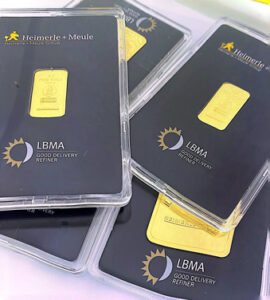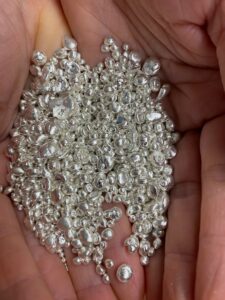Water Purification – Silver
Silver has been used for centuries as a water disinfectant due to its antibacterial properties. This makes it an attractive option for water treatment in situations where other methods are not available or practical. In this article, we will explore the various aspects of using silver for water purification, including how it works, different forms of silver used, advantages and disadvantages, potential health risks, incorporation into treatment systems, best practices, regulations and guidelines, ongoing research efforts, recycling and disposal, and alternative approaches.
How does silver work as a disinfectant in water purification?
Silver ions are introduced into the water, and they work by disrupting the cell membrane of microorganisms. This damage prevents the microorganism from carrying out its normal metabolic functions, leading to cell death. Silver ions also inhibit the production of enzymes needed for the microorganism’s survival, which further weakens it. Unlike other disinfectants such as chlorine, silver does not leave a chemical residue in the water, making it ideal for situations where the water must be used for drinking or food preparation.
Different forms of silver used in water purification
The most common forms include silver nitrate, silver sulfadiazine, and colloidal silver. Each of these forms has its unique properties, and they can be used in different ways depending on the application. For example, silver nitrate is used to disinfect swimming pools, while silver sulfadiazine is used to treat wounds. Colloidal silver, on the other hand, is used in water purification due to its ability to produce a large number of silver ions when exposed to water.
What are the advantages and disadvantages of using silver for water purification compared to other disinfectants such as chlorine or ozone?
One significant advantage of silver is that it is effective against a broad range of microorganisms, including bacteria, viruses, and fungi. It is also less likely to produce harmful byproducts compared to chlorine, which can produce trihalomethanes, a known carcinogen. However, silver can be more expensive than other disinfectants, and it requires a longer contact time to be effective, making it less practical for large-scale water treatment systems.
What are the potential health risks associated with consuming water treated with silver?
While silver is generally considered safe for human consumption, excessive exposure can lead to a condition known as argyria, where the skin turns a bluish-gray color. This condition is irreversible and does not cause any other health problems, but it can be unsightly. Therefore, it is important to follow the recommended dosages when using silver for water treatment.
How is silver incorporated into water treatment systems, and what are some common methods for measuring silver concentrations in treated water?
Silver can be added to water using different methods, such as dosing systems, electrochemical methods, or by using silver-coated filter media. The concentration of silver in the water is typically measured using spectroscopy or other analytical techniques.
What are some best practices for using silver in water purification, and how can they be implemented in different settings such as households, hospitals, or industrial facilities?
Best practices include following recommended dosages, ensuring proper contact time, maintaining adequate silver concentration, and monitoring the water for any signs of contamination.
What are the current regulations and guidelines governing the use of silver in water treatment, and how do they vary by country or region?
Regulations and guidelines vary depending on the location, but they typically set maximum allowable silver concentrations in drinking water and establish protocols for monitoring and reporting.
What are some ongoing research efforts to improve the effectiveness and safety of silver-based water purification methods?
Efforts include developing new silver-based materials, optimizing dosages and contact times, improving methods for measuring silver concentrations in water, and exploring alternative approaches to using silver in water treatment.
How can silver be recycled or disposed of after it has been used in water treatment processes?
Silver can be recovered from treated water using various methods, such as ion exchange or chemical precipitation. The recovered silver can be reused or sold for other applications. Disposal of silver should follow local regulations and guidelines to prevent environmental contamination.
What are some alternative approaches to water purification that do not involve silver?
Alternative approaches to water purification include chlorine, ozone, ultraviolet light, and membrane filtration. Each method has its unique advantages and disadvantages, and the best approach will depend on the specific application and context.
In conclusion, silver is a valuable tool for water purification due to its antibacterial properties. However, its use must be carefully managed to avoid potential health risks and ensure that it is effective in treating the water. Ongoing research efforts are exploring new ways to improve the effectiveness and safety of silver-based water purification methods. Alternatives to silver-based water purification exist, and the best approach will depend on the specific application and context. Overall, the use of silver in water purification provides an essential tool for ensuring safe drinking water, especially in situations where other methods are not available or practical.






